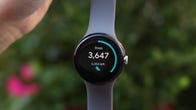Google Pixel Watch Review: Fitbit’s Best-Looking Watch Yet
Google’s Pixel Watch feels like the Apple Watch alternative that Android device owners have been waiting for. It should also appeal to Fitbit fans looking for familiar menus and fitness tracking, all showcased in a stylish watch design. The Pixel Watch starts at $350 (£339, AU$549) and hits stores on Oct. 13.
Like
- Gorgeous design with curved glass screen
- Plenty of health exercise tracking options through Fitbit
- Easy to use software
- Accurate heart rate tracking for a smartwatch
Don’t Like
- Relatively short battery life
- Bezels are noticeable on certain watch faces
- Only one size option
- Can’t automatically start a workout
- No high/low or irregular heart notifications
Let me explain what I mean by “Apple Watch alternative.” As is the case with the Android phone landscape, the market for Android-compatible smartwatches encompasses watches from many different brands, including Samsung, Fitbit (which is now part of Google), Michael Kors, Fossil and Garmin among others. Smartwatches from some of these brands are also iPhone-compatible, meaning there haven’t been many options designed specifically for the Android crowd. Many of these devices also tend to lean more closely into fitness or fashion, and they struggle to package a good balance of both while serving as a viable phone companion.
The Apple Watch does all of these things well, and now the Pixel Watch promises to do the same for Android users. Samsung’s Galaxy Watch series has been the closest Apple Watch alternative yet, and it does have some extra health tracking functionality that’s missing from the Pixel Watch. But Samsung’s watch requires a Galaxy device to access certain features, and its design isn’t quite as polished.
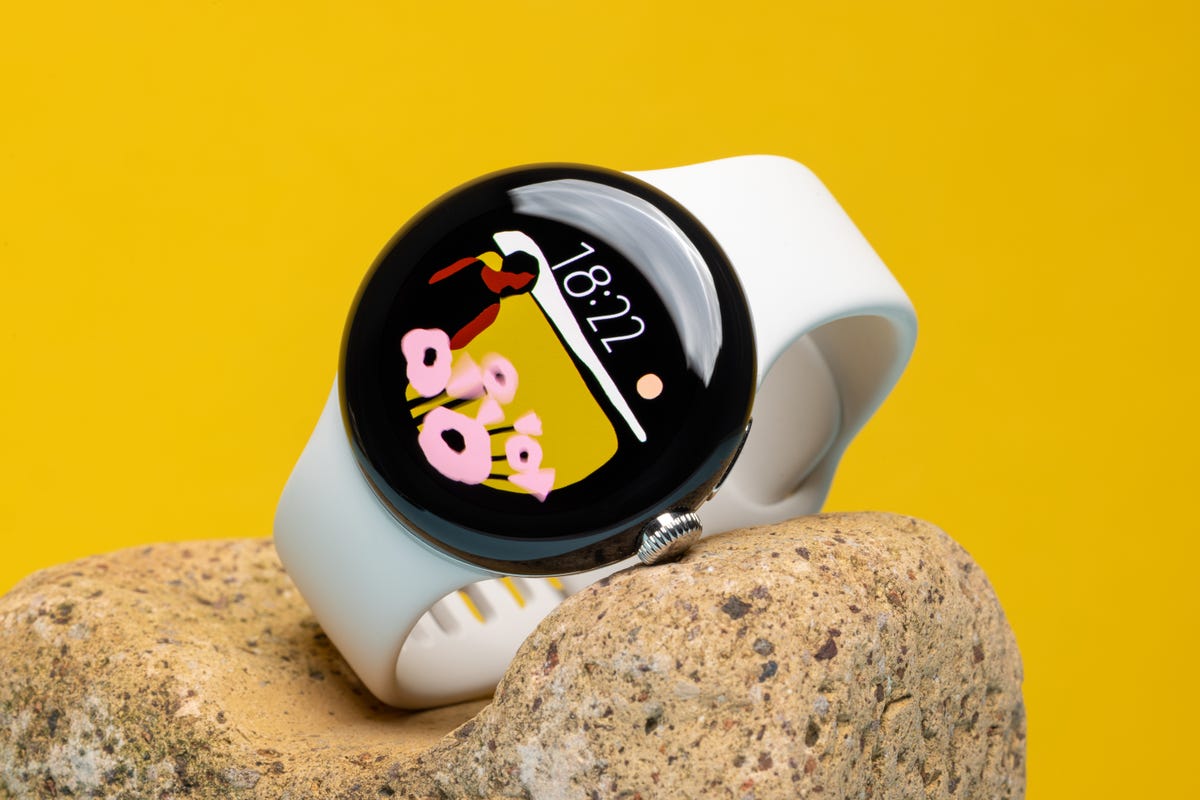
The Google Pixel Watch.
Andrew Lanxon/CNET
I’ve only been using the Pixel Watch for a few days, but I’m already impressed with its sharp looks, smooth software and wide variety of apps. But that doesn’t mean I don’t have my complaints. The battery life could be better, for example. And despite its deep integration with Fitbit, the Pixel Watch is missing some useful health features, including the ability to automatically start a workout from your wrist.
Pixel Watch design: A cut above most Android smartwatches
Looks may not always be a top factor when it comes to tech products, but smartwatches are the exception. Anything you plan to wear all day needs to look good. Luckily, the Pixel Watch accomplishes this with curved glass edges that give it a striking look that stands out from most competing smartwatches.
I appreciate that Google was able to develop a minimalist watch that also feels stylish, considering most fashion-forward watches, such as those from Michael Kors, have a chunky look that mimics the aesthetic of analog watches. While some may prefer that look, I’d rather wear something sleeker that feels comfortable to have on my wrist during workouts and overnight.
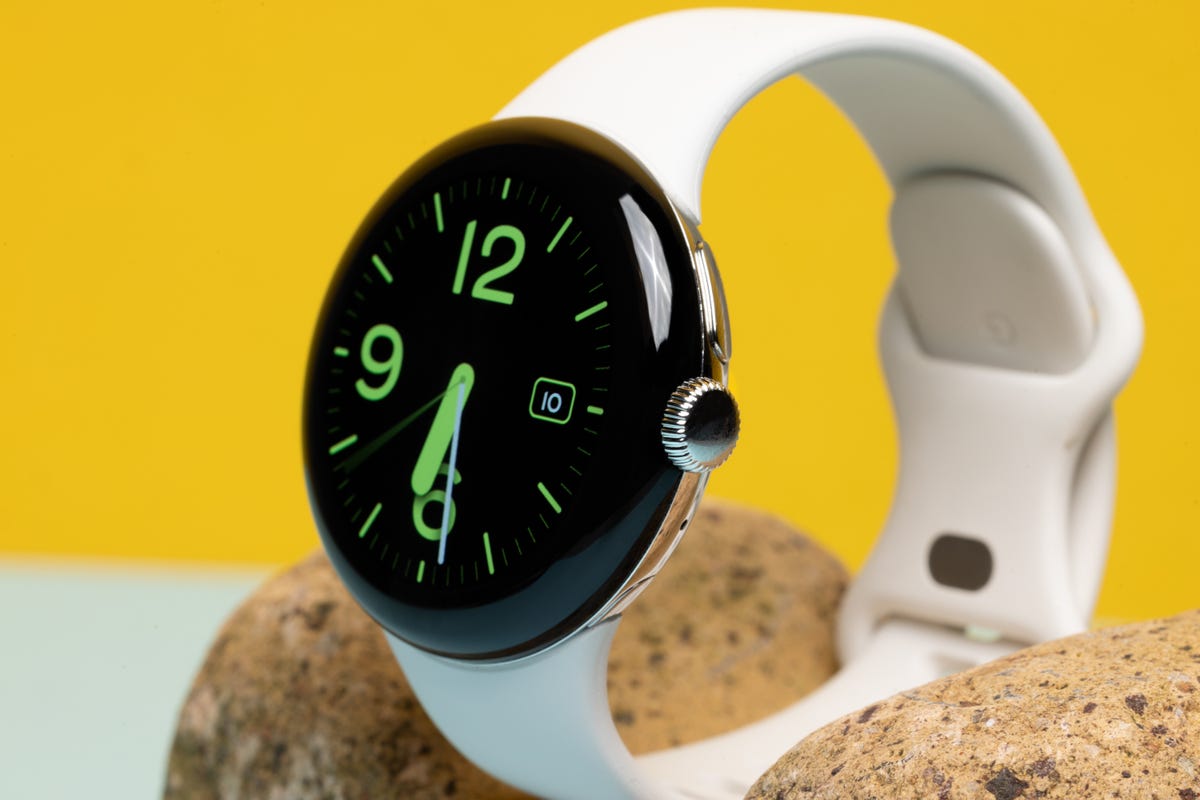
Google’s Pixel Watch has a premium design that rivals the Apple Watch.
Andrew Lanxon/CNET
Even though the Apple Watch has a squircle-shaped display and lacks the Pixel Watch’s domed glass, I couldn’t help but draw comparisons between the two. Everything from the Pixel Watch’s crown — which doubles as a button and a scroll wheel just like on the Apple Watch — to the quality of the bands and the premium casing around the watch itself just screams Apple Watch.
The active watch band that came with my Pixel Watch feels almost identical to the Apple Watch’s included sport band. However, scrolling with the Pixel Watch’s crown doesn’t feel quite as fluid and smooth as doing so with the Apple Watch’s digital crown. And unlike the Apple Watch and Galaxy Watch 5, the Pixel Watch only comes in one 41-millimeter size. I personally don’t mind that since I have a smaller wrist, but I imagine that may not suit everyone.
If you’ve been reading about the Pixel Watch ahead of its debut, you’ve probably heard about the so-called “fat” bezels. After using the Pixel Watch for a couple of days, I can confirm they certainly do exist. But I don’t think they’re as big of a deal as they’re being made out to be. Smartwatches are designed for quick glances — not long interactions — and I barely notice the bezels in everyday use when taking a quick look down at my wrist. The mostly black backdrop of Google’s Wear OS and the Pixel Watch’s rounded edges make it hard to notice where the screen ends and the bezel begins.
However, if you look closely, it does become noticeable when using certain apps and features. When using the QWERTY keyboard to quickly respond to a text (yes, I know, using a keyboard on a watch sounds ridiculous), I found myself wishing the Pixel Watch had just a bit more screen space around the edges. You’ll also notice certain buttons or other on-screen elements get cut off just slightly because of the bezel. In Google Maps, for example, the “ft” abbreviation for feet didn’t entirely show on the screen when the watch was telling me to turn in 400 feet.

You can see the Pixel Watch’s black bezels when using the Photos watch face.
Andrew Lanxon/CNET
The Pixel Watch has a wide selection of watch faces to choose from, which can be customized with “complications” or additional measurements and details. As with the Apple Watch, you can edit watch faces directly on the watch or in the companion app, rotating the crown to swap out colors. There are 19 styles to choose from, and Google offers multiple variations of each. I’ve been using the “Everyday” collection, which shows the time in big bold characters surrounded by the date, weather and calories burned.
I like the clean and simple look of Google’s watch faces, but I also feel like many of them are similar. Most of Google’s watch faces are focused on showing the time and complications in a variety of ways, while Apple offers a wide variety of faces with different themes and animations, like the Astronomy watch face, the Breathe watch face and colorful kaleidoscope watch face. Google does offer a photos watch face that cycles through pictures of your choosing from the Google Photos app. But unfortunately, this is one of the few scenarios in which the Pixel Watch’s bezels feel obtrusive and detract from the watch’s aesthetic, since the black borders are very noticeable against backdrops with color.
Setting up the Pixel Watch with Google’s Pixel 7 was quick and easy. Since the Pixel Watch supports Google Fast Pair, my phone prompted me to download the accompanying watch app from the Play Store as soon as I turned on the watch.
Pixel Watch software combines Google and Fitbit
The Pixel Watch runs on Wear OS 3.5, the newest version of Google’s smartwatch software. But there’s a lot of Fitbit infused throughout the operating system, starting with the Fitbit complications you can add to the watch face. You’ll even get those “Reminder to move” notifications every hour that will feel familiar to anyone who has used a Fitbit device in the past.
In fact, the Pixel Watch’s interface feels almost identical to that of the Fitbit Sense 2, which I was wearing regularly before I switched to the Pixel Watch for this review. From the watch face, swiping up will show notifications and swiping down will take you to your settings shortcuts. Swiping to the left or right allows you to cycle through tiles, which are essentially like static widgets for your watch.
There are tiles for showing the weather, exercise shortcuts, how your heart rate has been trending over the past couple of hours, your calendar and sleep data. You can rearrange these tiles by pressing and holding down on any tile. Pushing the crown takes you to your app list (pressing the Fitbit Sense 2’s side button does the same on that watch), and double tapping the crown will launch Google Pay.

The Pixel Watch comes in one 41-millimeter size.
Andrew Lanxon/CNET
There’s also another button above the crown that you can press to summon your recent apps. You can also access the Google Assistant by either saying the “Hey Google” wake word or pressing and holding the side button.
One of the key factors that separates the Pixel Watch from the Fitbit Sense 2, aside from its design and round shape, is the fact that you can access the Google Play Store from your wrist. Samsung’s Galaxy Watch 5 also has the Google Play Store since it’s also powered by Wear OS, and Apple similarly allows you to download App Store apps directly to the Apple Watch. That means you can access apps like Spotify, Strava, Todoist, Calm and many others, making the Pixel Watch feel like a more full-featured smartwatch than the Fitbit Sense 2. But again, this isn’t exclusive to the Pixel Watch.
Google Pixel Watch has Fitbit health tracking
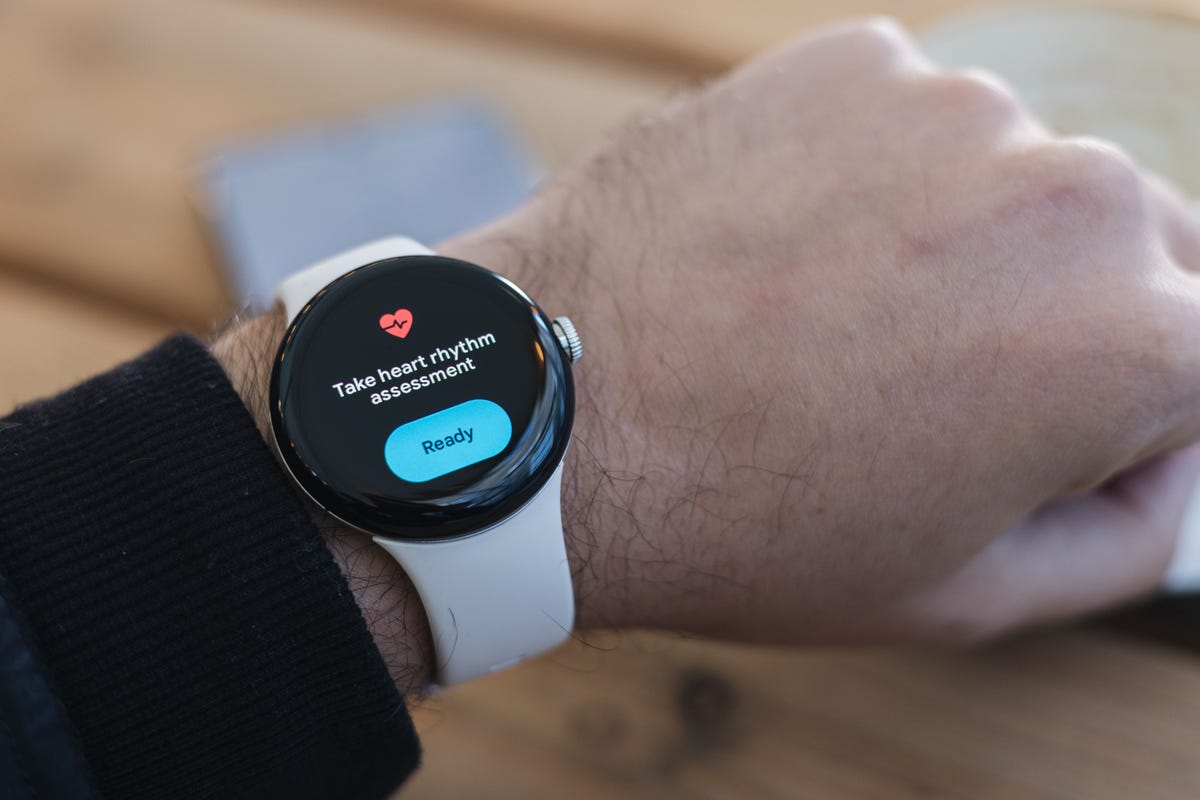
Google’s Pixel Watch has many of Fitbit’s health-tracking features.
Andrew Lanxon/CNET
The Pixel Watch is essentially a nice-looking Fitbit smartwatch, but with more phone-companion features including optional LTE and Google Play Store access. You’ll find Fitbit’s ECG app, Exercise app and Today app on the Pixel Watch, along with tiles showing familiar Fitbit metrics such as steps, heart rate and sleep.
Google’s new smartwatch technically works with Google Fit and Fitbit, but the company is pushing Fitbit as the primary hub for your Pixel Watch’s health data. I agree that Fitbit generally offers a superior experience since it does a better job of making sense of health data rather than just showing it in the app.
But it also makes me wonder why Google hasn’t just axed Google Fit in favor of Fitbit. Having both feels disjointed, although I’m sure Google is trying to keep existing Google Fit and Fitbit users happy by doing so. Other Wear OS watches, like those made by Fossil, don’t have Fitbit functionality like the Pixel Watch does, so that’s another likely reason why Google Fit still exists.
If you’re already a Fitbit loyalist, you can add the Pixel Watch to your Fitbit profile just like any other Fitbit device, and your health and exercise data carries over too. When I scrolled through my exercise history, all the workouts I logged in the Sense 2 in the days before I switched to the Pixel Watch were right underneath my recent Pixel Watch workouts. The same goes for sleep tracking. That should make the transition to the Pixel Watch smooth for longtime Fitbit users.
Overall, I think Google is smart to lean heavily into the Fitbit experience when it comes to health tracking. The Pixel Watch has inherited features that took the industry years to develop, particularly those that collate multiple data points to provide additional context, like Fitbit’s sleep score and readiness score.
Many in-depth features are locked behind a Fitbit Premium subscription, which costs $10 a month and provides access to workout videos and meditation programs as well as extra health insights. These include that daily readiness score mentioned above, your health trends over the past 90 days, a wellness report that collates your activity, sleep, weight, heart rate and menstrual health stats over the past month into a PDF, and more insight into the factors contributing to your sleep score. With the free app, you still get health and exercise tracking, sleep monitoring, including Fitbit’s basic sleep score and sleep stages. You’ll get a free six-month subscription to Fitbit Premium with the Pixel Watch.
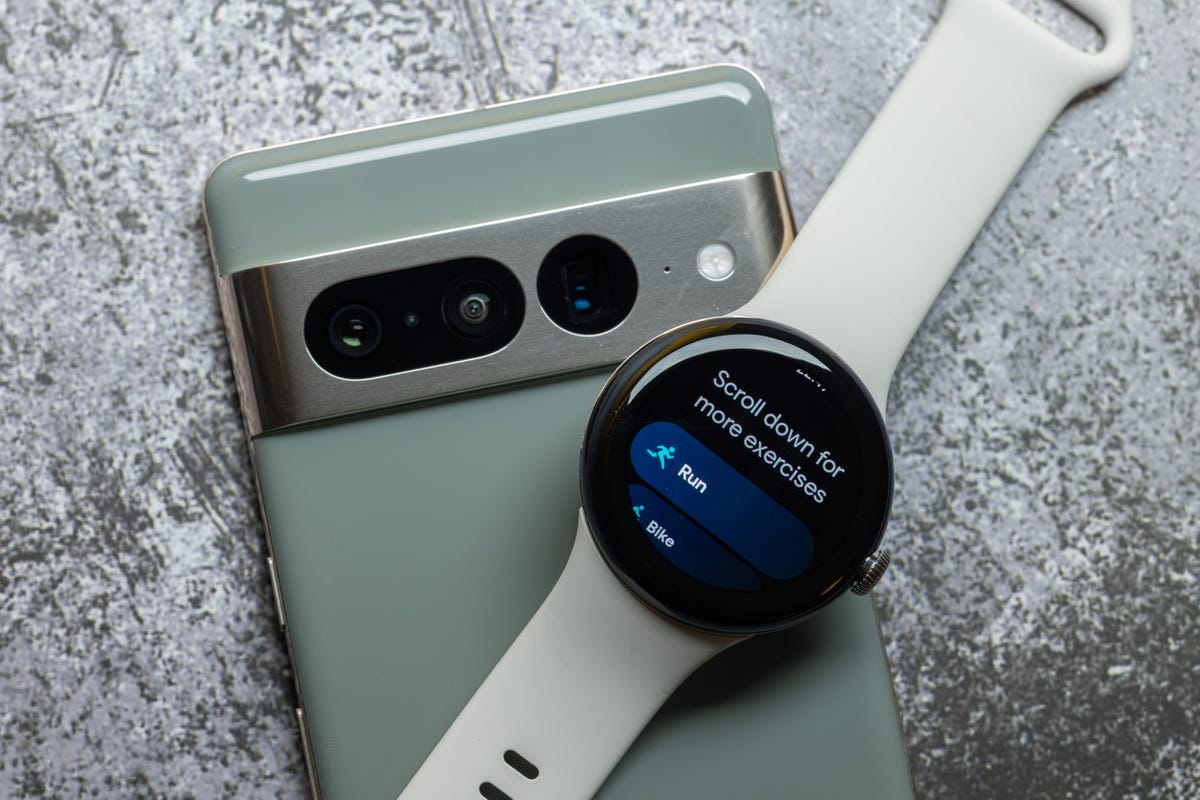
The Pixel Watch with the Pixel 7 Pro.
Andrew Lanxon/CNET
The Pixel Watch has almost all of the sensors for measuring health and activity that you’d expect from a premium smartwatch, including optical heart rate, ECG, GPS, compass, altimeter, an accelerometer and a gyroscope. Blood oxygen and fall detection are also coming at a later date. Google claims the Pixel Watch has the most accurate heart rate monitor of any device the company has shipped yet, including other Fitbit products.
I compared it against a chest strap heart rate monitor, which is considered to be much more accurate, both at rest and during a light cardio workout. I did the same with the Fitbit Sense 2 and Apple Watch Series 8. At rest, all three smartwatches were able to match the readings from my chest strap fairly easily, although the Pixel Watch seemed to catch up a bit faster.
While doing some light cardio, the Pixel Watch generally lined up most closely with the chest strap. It was sometimes off by four or five beats and took a few moments to reach the same heart rate as the chest strap. But that was still more accurate than the Apple Watch Series 8 and Fitbit Sense 2. The Apple Watch was sometimes off by around 10 beats before catching up to the strap, while the Fitbit Sense 2 sometimes lagged behind the chest strap by around 15 beats.
Google’s Pixel Watch Is One of the Best-Looking Smartwatches
See all photos
However, the Pixel Watch is missing some important features found on other similar smartwatches. It can’t automatically trigger an exercise on your wrist when a workout is detected, although luckily it logs that workout data and adds it to the Fitbit app so you still get credit. But it’s a surprising omission, given the Pixel Watch’s focus on fitness. It also can’t provide notifications for high and low heart rates or irregular heart rhythms like the Fitbit Sense 2 and Apple Watch Series 8. That’s disappointing, considering Google and Fitbit put a lot of resources behind the Pixel Watch’s heart-rate tracking. The Galaxy Watch 5 can’t provide irregular heart rhythm notifications either, but it does support high and low heart-rate notifications. Instead, you can take an on-demand heart rhythm reading in the ECG app available on the Pixel Watch, similar to the Galaxy Watch 5.
The one major health sensor the Pixel Watch is missing compared to its competitors is a temperature sensor. The Apple Watch Series 8 and Apple Watch Ultra are the company’s first to get a wrist temperature sensor, which it’s positioning as being ideal for measuring female health metrics. The Fitbit Sense 2 and Samsung Galaxy Watch 5 also have temperature sensors, although Samsung’s isn’t active yet. This isn’t a deal breaker, though, considering temperature sensing in wearables is still relatively new and most companies are figuring out the best way to put it to use right now.
Using the Pixel Watch to track workouts feels a lot like logging workouts with the Fitbit Sense 2. Fitbit’s Exercise app is built into the watch, so you get access to around 40 exercise tracking options directly from the watch. You can also download music from Spotify to the watch, although Google is pushing YouTube Music Premium by offering three months for free.
Pixel Watch performance and battery life
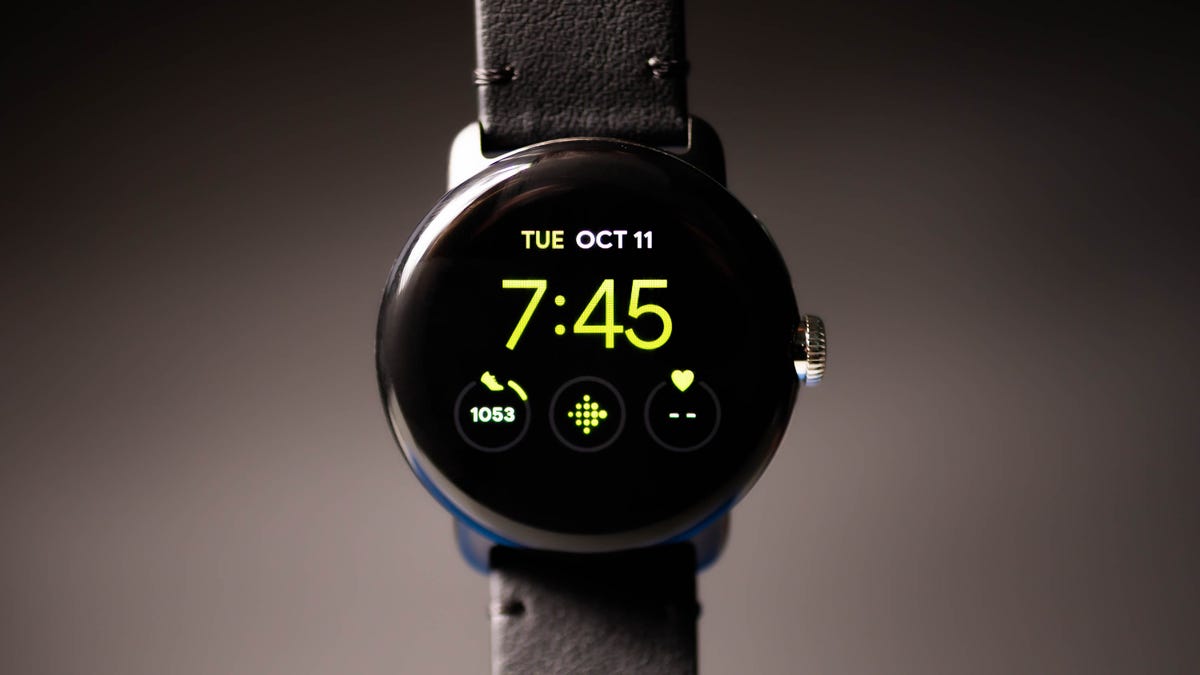
The Pixel Watch has a selection of watch faces that show the time and complications.
James Martin/CNET
Although Google’s Tensor chip has become the heart of its Pixel phones, the Pixel Watch runs on an Exynos 9110 system-on-a-chip with a Cortex M33 coprocessor. Performance has been smooth and snappy so far; the screen is responsive and apps generally load quickly.
When previously asked why Google didn’t develop a Tensor chip for the Pixel Watch, the company said it went with the two-processor approach to balance power and performance. The coprocessor, for example, runs sensor-based tasks like GPS, heart rate and step counting while the main processor drives the operating system.
The Pixel Watch checks most of the boxes when it comes to features that are expected of a premium watch. But I’m hoping to see Google add more Pixel-specific features in the future, similar to the way it’s done with Pixel phones. And I don’t mean features that only work if you’re using the watch with a Pixel phone, but rather creative use cases that have been overlooked in smartwatches thus far. Google has done a good job of this in its Pixel phones by focusing on the calling experience through features like Direct My Call and Hold For Me.
As for battery life, the Pixel Watch seems like the type of smartwatch you should plan to charge overnight in most cases — especially if you’re using the always-on display. But it’s difficult to tell for sure because my experience varied over the course of my time with the watch so far.
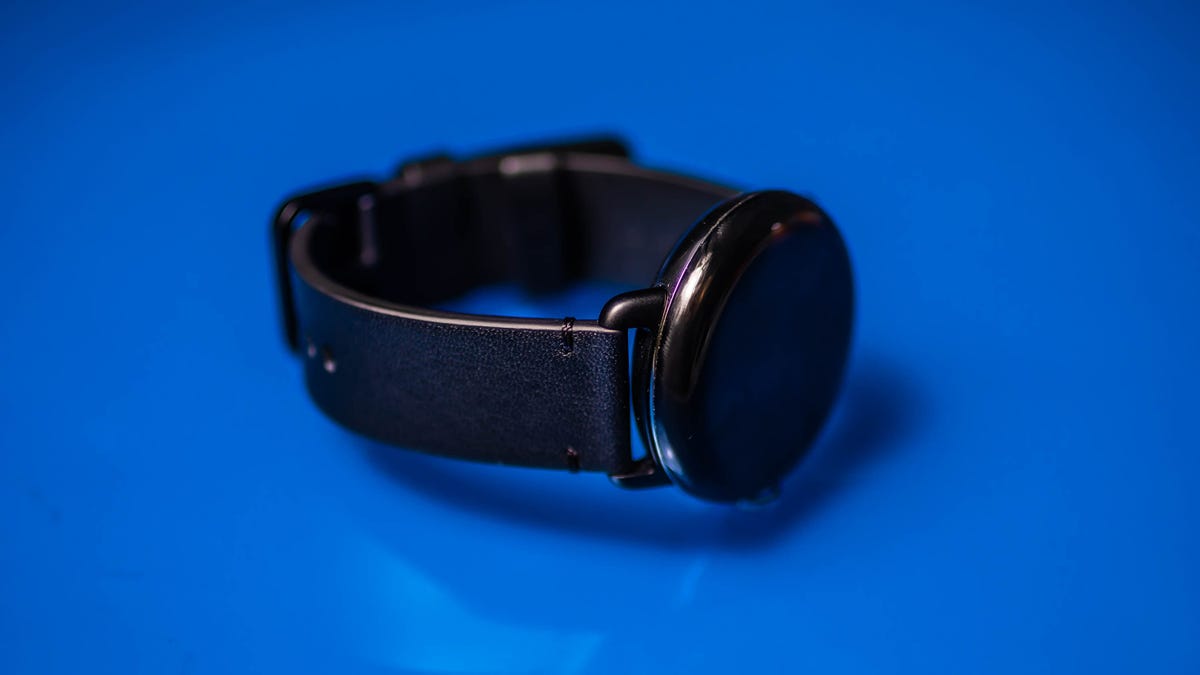
Google’s Pixel Watch comes with the active watch band, which is a lot like Apple’s sport band.
James Martin/CNET
The Pixel Watch lasted for roughly 15.5 hours on my first full day wearing it, after I had completed the set up process the night before. I kept the always-on display active that day and tracked 22 minutes of outdoor running with GPS. Battery life improved significantly the next day with the always-on display turned off; I got around 28 hours with the always-on display deactivated on a day when I didn’t work out and was primarily using the watch for notifications.
But on my fifth day wearing the watch, during which I kept the always-on display active and logged a 30-minute spinning workout, I still had 8% left the next morning. Google says this could be because some apps and services update slowly after setup, so battery life is generally more accurate after the first couple of days of use.
It’s difficult to say exactly what to expect without spending more time with the watch. But it seems safe to say that you can probably expect to get about a day out of the Pixel Watch, and possibly a little more than that without the always-on display, which lines up with Google’s claims. This is one area where the Pixel Watch falls short compared to some other smartwatches. The Fitbit Sense 2 is rated to last for six days, although the always-on display will likely drain the battery more quickly. The Apple Watch Series 8 is technically rated for 18 hours of battery life. But in my experience, I’ve been able to get roughly a day and a half even with the always-on display turned on.
Pixel Watch overall thoughts
The Pixel Watch feels like a hybrid of Fitbit and the Apple Watch, which is a good thing. It combines the Apple Watch’s high-quality design with Fitbit’s fitness tracking, which come together to make for a compelling Android smartwatch that has a lot of potential to be the best choice for non-iPhone device owners.
Google’s first attempt at a smartwatch generally hits the marks, but there are a few areas in which I’d like to see improvement. The most important one is battery life. I wasn’t expecting the Pixel Watch to replicate Fitbit’s multiday battery life, but I was also disappointed to see that getting through a full day with the always-on display was a struggle. While the controversy around the Pixel Watch’s thick bezels is overblown, you can definitely notice them on certain watch faces — particularly the photos watch face. I also wish the Pixel Watch could automatically start a workout on my wrist when it detects brisk activity, which is a relatively basic feature found on many other fitness trackers and smartwatches.
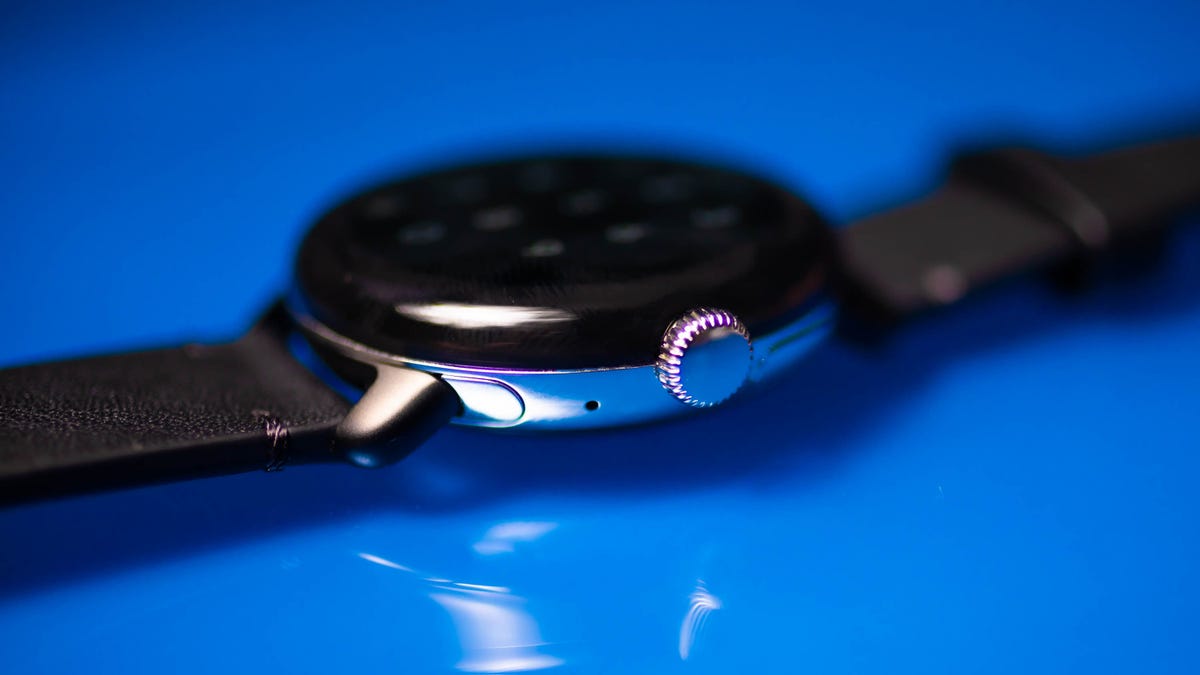
The Pixel Watch’s design sets it apart from other Android smartwatches.
James Martin/CNET
While I think the Pixel Watch is generally the best choice, there are some scenarios in which it might make more sense to buy the cheaper $300 Fitbit Sense 2 or $279 Galaxy Watch 5 instead. If battery life and sleep tracking are the top priority and you don’t mind sacrificing the Pixel Watch’s good looks, Google Play Store access and other extra features like smart home controls, then consider the Sense 2 or even the $230 Versa 4. The Galaxy Watch 5, on the other hand, is also worth considering if you want to spend a little less and aren’t hooked into Fitbit’s ecosystem. Just remember that Samsung’s ECG feature requires that you have a Samsung phone with the company’s Health Monitor app.
More broadly, I’d love to see Google inject more of its own personality into the watch. Google’s Pixel phones have creative software features you can’t get on other phones, which adds to their appeal. Right now, it feels like Google is leaning heavily on Fitbit to make its watch stand out from its competitors. The Pixel Watch doesn’t really bring anything new to the world of smartwatches, but it’s filling a hole in the market that’s existed for a long time. And that’s enough for now, but there’s room for Google to do more in the future.
For all the latest world News Click Here

